Twickenham is the home of rugby and, appropriately, this Wetherspoon pub is named after William Webb Ellis, who is said to have invented the game.
A photograph, illustration and text about William Webb Ellis.
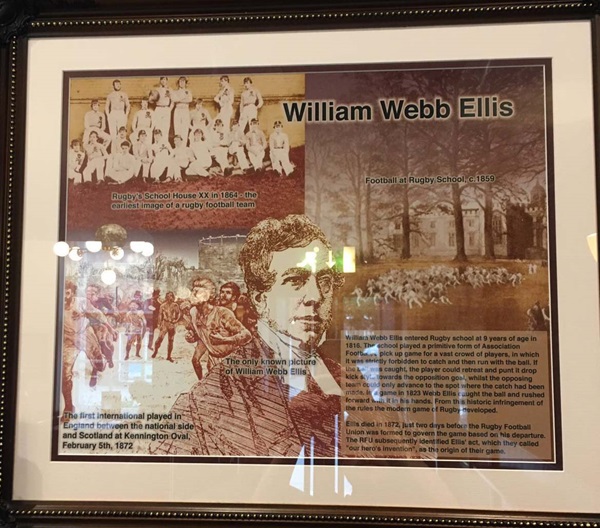
The text reads: William Webb Ellis entered Rugby school at 9 years of age in 1816. The school played a primitive form of Association Football, a pick-up game for a vast crowd of players, in which it was strictly forbidden to catch and then run with the ball. If the ball was caught, the player could retreat and punt it drop kick style towards the opposition goal, whilst the opposing team could only advance to the spot where the catch had been made. In a game in 1823 Webb Ellis caught the ball and rushed forward with it in his hands. From this historic infringement of the rules the modern game Rugby developed.
Ellis died in 1872, just two days before the Rugby Football Union was formed to govern the game based on is departure. The RFU subsequently identified Ellis’ act, which they called “our hero’s invention”, as the origin of their game.
Illustrations and text about Twickenham Park.
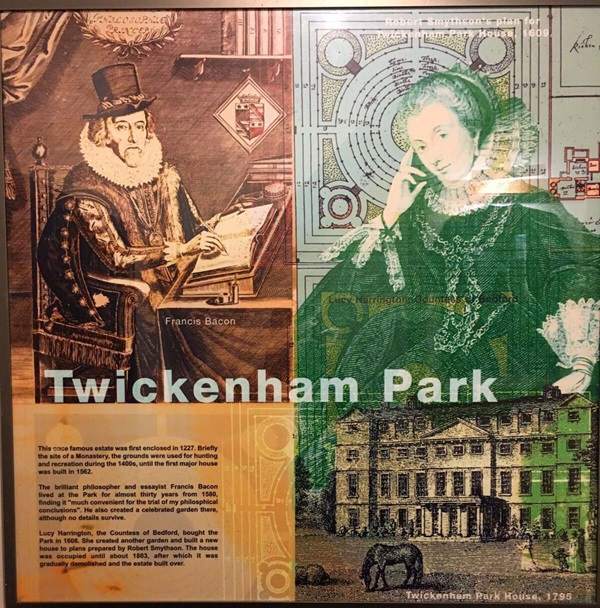
The text reads: This once famous estate was first enclosed in 1227. Briefly the site of a monastery, the grounds was used for hunting and recreation during the 1400s, until the first major house was built in 1562.
The brilliant philosopher and essayist Francis Bacon lived at the park for almost thirsty years from 1580, finding it “much convenient for the trial of my philosophical conclusions”. He also created a celebrated garden there although no details survive.
Lucy Harrington, the Countless of Bedford, bought the park in 1608. She created another garden and built a new house to plans prepared by Robert Smythson. The house was occupied until about 1803, after which it was gradually demolished and the estate built over.
Illustrations, prints and text about Alexander Pope.
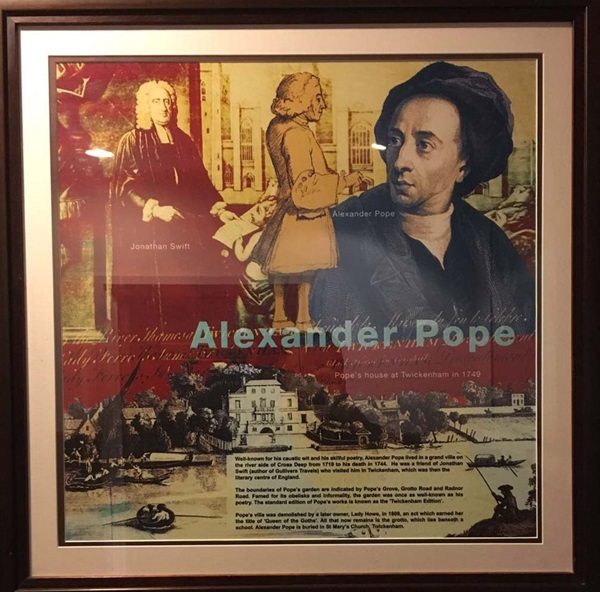
The text reads: Well known for his caustic wit and his skilful poetry, Alexander Pope lived in a grand villa on the river side of Cross Deep from 1719 to his death in 1744. He was a friend of Jonathan Swift (author of Gulliver’s Travels) who visited him in Twickenham, which was then the literary centre of England.
The boundaries of Pope’s garden are indicated by Pope’s Grove, Grotto Road and Radnor Road. Famed for its obelisks and informality, the garden was once as well known as his poetry. The standard edition of Pope’s works is known as the Twickenham Edition.
Pope’s villa was demolished by a later owner, Lady Howe, in 1808, an act which earned her the title of ‘Queen of the Goths’. All that now remains is the grotto, which lies beneath a school. Alexander Pope is buried in St Mary’s Church, Twickenham.
Illustrations and text about Horace Walpole.
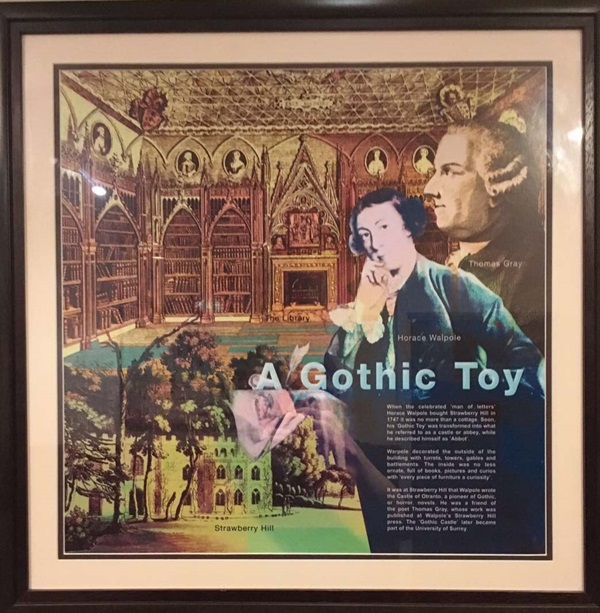
The text reads: When the celebrated ‘man of letters’ Horace Walpole brought Strawberry Hill in 1747 it was no more than a cottage. Soon his ‘Gothic Toy’ was transformed into what he referred to as a castle or abbey, while he described himself as Abbot.
Walpole decorated the outside of the building with turrets, towers, gables and battlements. The inside was no less ornate, full of books, pictures and curios with ‘every piece of furniture a curiosity’.
It was at Strawberry Hill that Walpole wrote the Castle of Otranto, a pioneer of Gothic, horror novels. He was a friend of the poet Thomas Gray, whose work was published at Walpole’s Strawberry Hill press. The Gothic castle later became part of the University of Surrey.
Illustrations and text about Twickenham’s mansions.
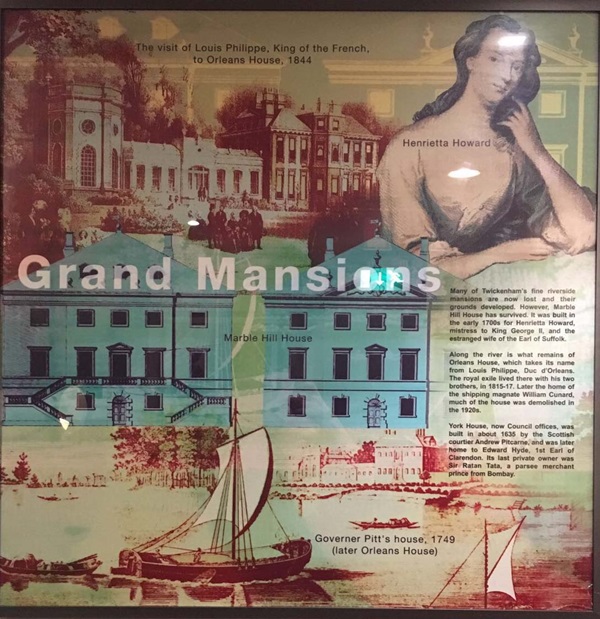
The text reads: Many of Twickenham’s fine riverside mansions are now lost and their grounds developed. However, Marble Hill House has survived. It was built in the early 1700s for Henrietta Howard, mistress to King George II, and the estranged wife to the Earl of Suffolk.
Along the river is what remains of Orleans House, which takes its name from Louis Phillippe, Duc d’Orleans. The royal exile lived there with his two brothers, in 1815-17. Later the home of the shipping magnate William Cunard, much of the house was demolished in the 1920s.
York House, now council offices, was built in about 1635 by the Scottish courtier Andrew Pitcarne, and was later home to Edward Hyde, 1st Earl of Clarendon. Its last private owner was Sir Ratan Tata, a parsee merchant prince from Bombay.
A photograph of William (Billy) Williams, who found the site for Twickenham Rugby Stadium.
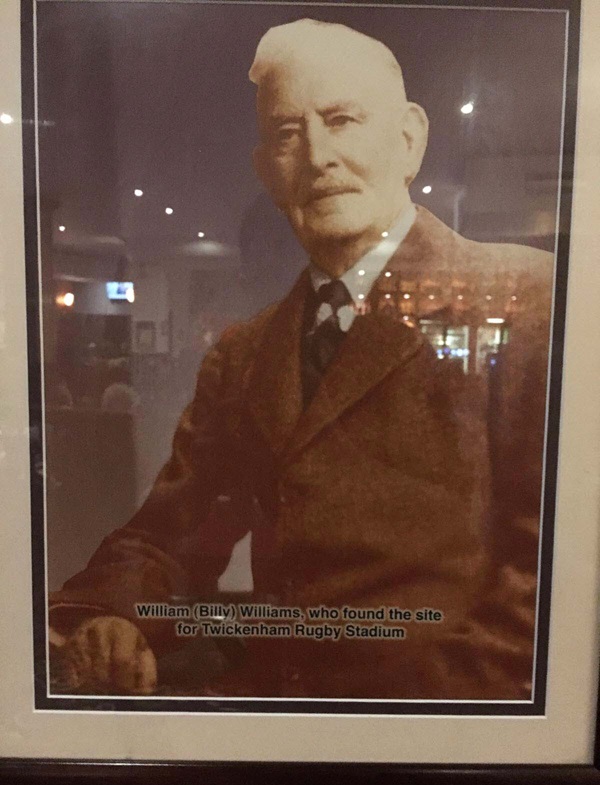
The Armorial Bearings of the Rugby Football Union.
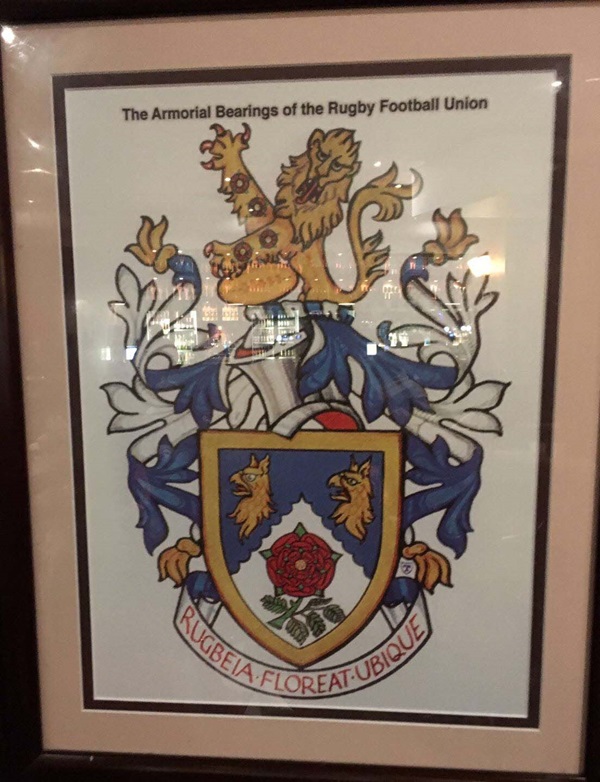
A print and text about the Calcutta Cup.
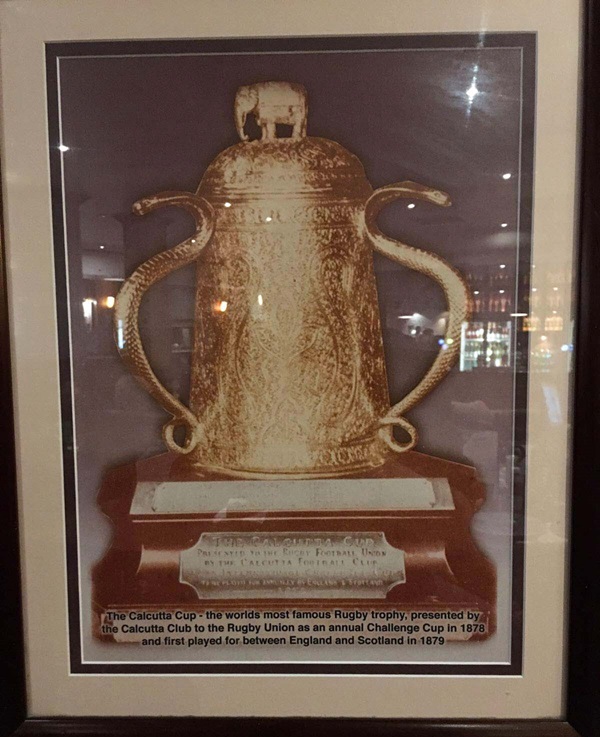
The text reads: The world’s most famous rugby trophy, presented by the Calcutta Club to the Rugby Union as an annual Challenge Cup in 1878 and first played for between England and Scotland in 1879.
A print of Rugby School and the headmaster’s house and the doctor’s wall where a plaque to William Webb Ellis is set.

A poster advertising a charity rugby match at Twickenham on Saturday 27 April, 1935.
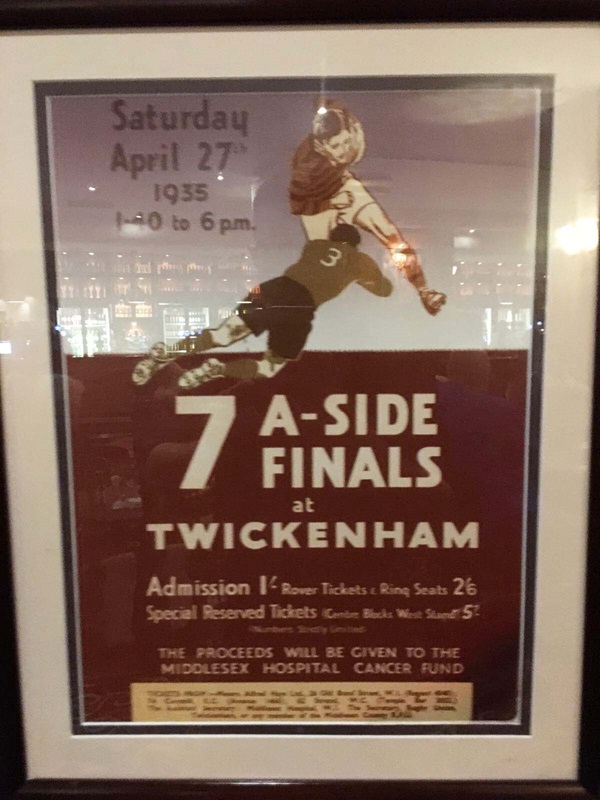
A collection of rugby memorabilia, including newspaper cuttings a signed rugby shirts.
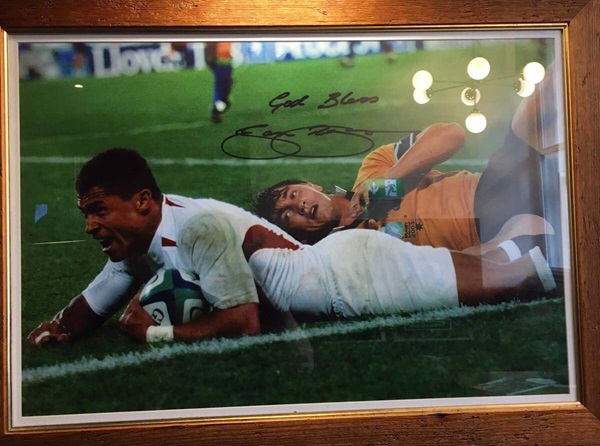

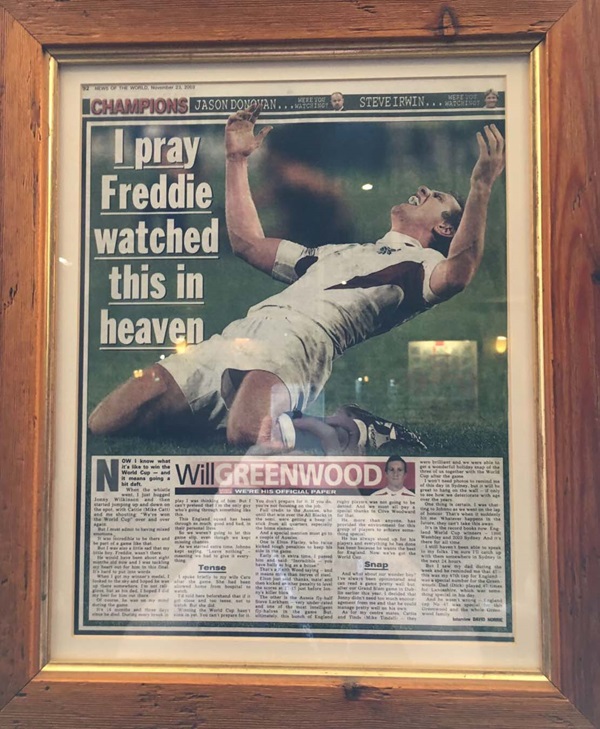
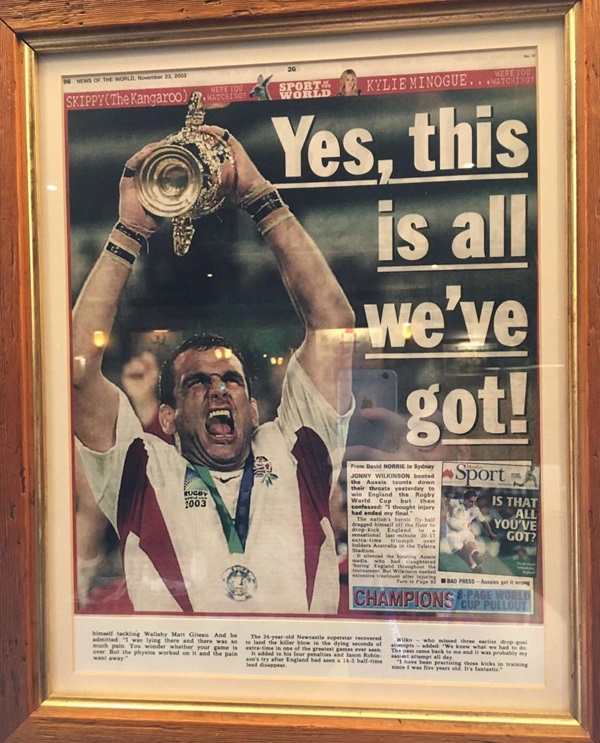

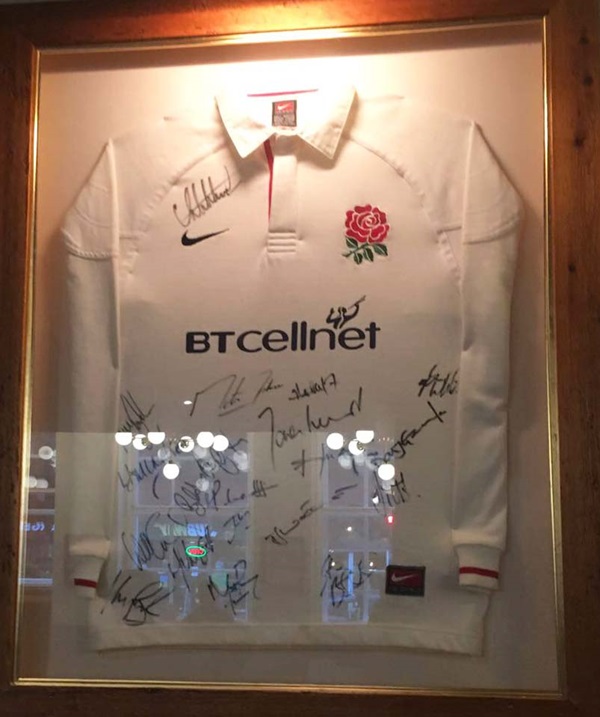
A photograph of Twickenham Stadium 1987.
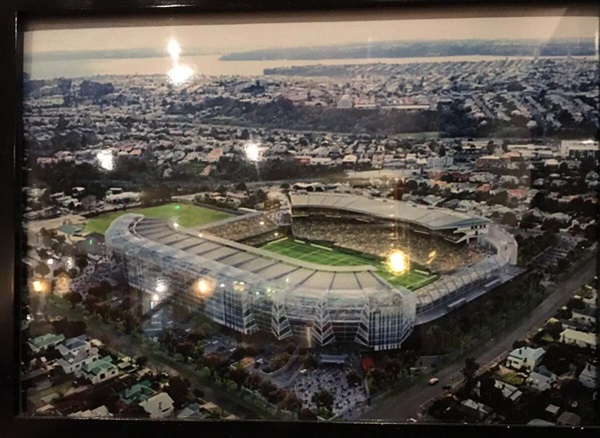
A photograph of Twickenham Stadium 1991.

External photograph of the building – main entrance.
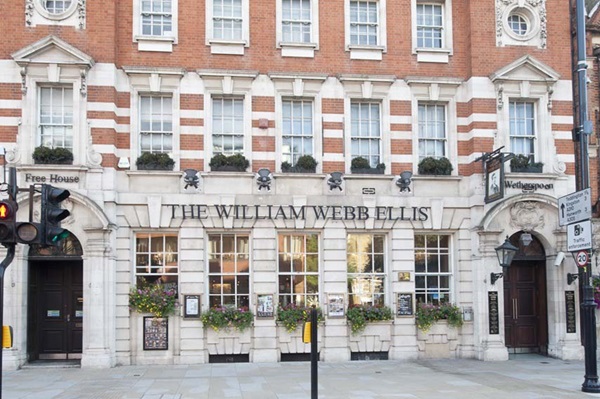
Extract from Wetherspoon News Summer 2019.

If you have information on the history of this pub, then we’d like you to share it with us. Please e-mail all information to: pubhistories@jdwetherspoon.co.uk